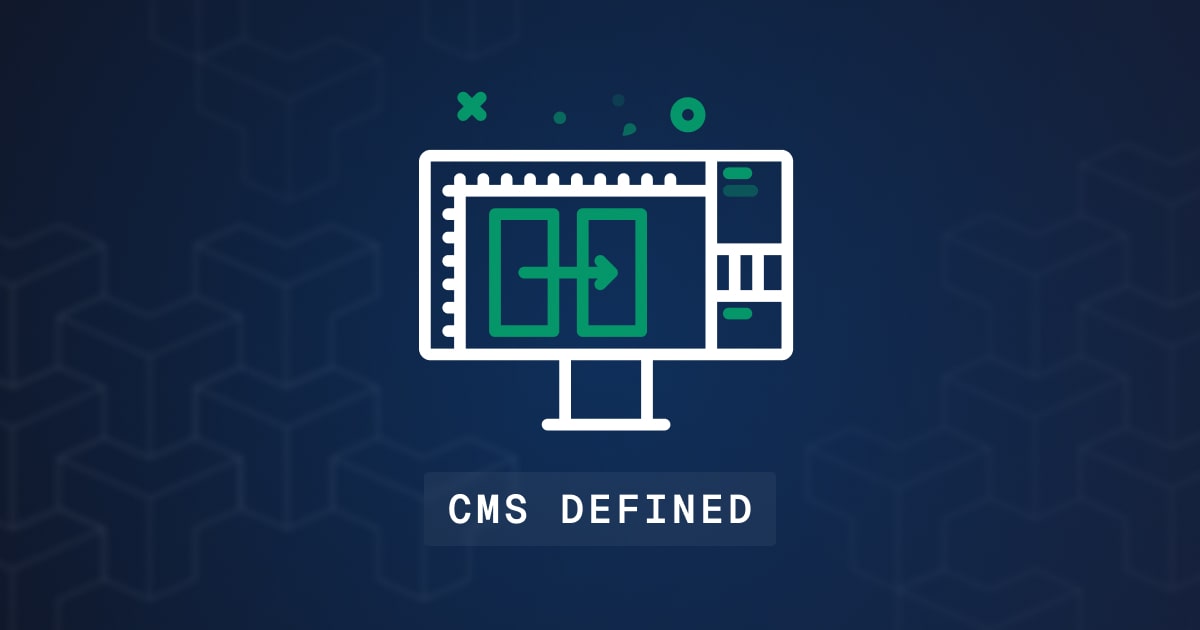CMS defined
A Content Management System (CMS) is a versatile and essential tool that not only serves as a repository for content but also enables comprehensive management and publishing across multiple platforms. Whether for websites, mobile applications, government and healthcare portals, blogs and documentation, digital signage, or any other internet-connected device, a CMS facilitates seamless content delivery and control. With a CMS, users can efficiently organize, edit, and control their digital assets, making content deployment and governance more efficient. A CMS stores content and shares it on websites, apps, billboards, and other online platforms.
Without a CMS, organizations have to manually manage content across various platforms, which often involves coding, handling multiple content versions, and ensuring consistency across different mediums. This approach can be time-consuming, error-prone, and requires significant technical expertise, making it difficult to scale and adapt to changing needs efficiently.
Benefits of a CMS
Imagine an organization needs to update the privacy policy across its website, mobile app, and internal portal. Without a CMS, the team would need to manually update the policy in the codebase of each platform. This could involve different teams working on different platforms, each repeating the steps of editing, testing, and deploying. What could take just minutes with a CMS might take days or even weeks without one, delaying critical updates and creating room for inconsistencies and errors.
This manual process is not only time-consuming but also introduces the risk of mistakes, such as missing updates or incorrect formatting, leading to potential legal or compliance issues. Moreover, the time and effort required from technical teams to manage these updates divert them from focusing on more strategic and high-priority tasks. By implementing a CMS, these teams are freed from routine content management, allowing them to concentrate on more important initiatives, such as improving the user experience or developing new features.
The time saved by using a CMS directly translates into cost savings as well. Fewer man-hours spent on repetitive content updates mean reduced operational costs and increased productivity. Additionally, the reduced risk of errors and faster deployment of updates minimize potential legal risks and associated costs. Overall, a CMS not only accelerates content management processes but also enables organizations to allocate their resources more effectively, driving greater value from their technical teams.
Legacy and traditional CMS solutions
Now that we’ve discussed the challenges and limitations of managing content without a CMS, let’s examine some commonly used traditional CMS platforms. These options are popular for simple projects, but it’s important to consider how well they align with the specific needs of your organization, especially if you require scalability and the ability to manage content across multiple platforms.
WordPress
Pros:
- Designed for beginners, making it easy to set up websites quickly.
- Offers plugins that add functionality without requiring coding.
- Supported by a community, helpful for finding tutorials and troubleshooting issues.
- Includes SEO tools that are sufficient for small websites.
Cons:
- Not ideal for organizations managing complex content needs beyond websites.
- Frequent updates and maintenance are necessary to mitigate security risks.
- Reliance on plugins can slow down website performance and lead to conflicts.
- Customization beyond basic settings can require technical knowledge, which may be a barrier for growth.
Joomla
Pros:
- Suitable for users who need more options than basic platforms but still focus on website management.
- Offers user management features that can be useful for small teams.
- Provides multilingual support without needing additional plugins.
Cons:
- More complex than necessary for websites, which can be overwhelming for new users.
- Fewer themes and extensions compared to other platforms, limiting customization options.
- Better suited for small to medium-sized projects; lacks the scalability required for larger enterprises.
- Requires more technical know-how, which can be a barrier for small teams or organizations.
Drupal
Pros:
- Provides customization for users with specific needs, although this is often unnecessary for projects.
- Includes security features that appeal to users concerned with standard safety practices.
- Can handle diverse content types but may be too complex for websites.
Cons:
- Often too complex for organizations, making it challenging to manage without technical expertise
- Designed more for developers than for users, leading to a learning curve.
- Lacks the flexibility required to manage content beyond web pages, making it less suitable for organizations.
- Requires time and resources to set up and maintain, which may not be practical for projects.
Wix
Pros:
- Designed for users with no technical skills, making it easy to create websites.
- Provides a simple, all-in-one solution for projects, including hosting and templates.
- Allows for the rapid creation of sites, ideal for individuals or small businesses with needs.
Cons:
- Not suitable for advanced customization or complex website needs.
- Difficult to migrate to another platform, making it less flexible for organizations.
- Lacks advanced SEO tools, which may limit the website’s reach as the business grows.
- Not intended for organizations managing diverse content types across platforms.
Squarespace
Pros:
- Offers easy-to-use design tools for creating websites.
- Suitable for users who want to create websites without needing technical skills.
- Provides hosting and e-commerce options in a package, ideal for smaller projects.
Cons:
- Not designed for organizations looking to scale or manage digital ecosystems.
- Limited backend access restricts customization and integration options.
- More expensive for what it offers, especially when compared to solutions.
- Moving content to a more flexible or powerful platform can be difficult, making it less ideal for organizations planning to expand.

